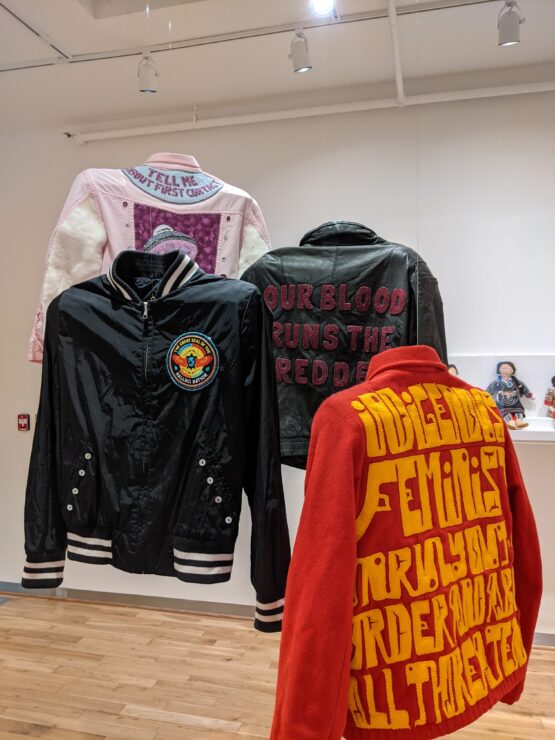The Legacy Art Gallery’s summer exhibition showcases intricately beaded works by Indigenous artists from the past and present

The University of Victoria’s Legacy Art Gallery opened a new exhibit On Beaded Ground for the summer. Showcasing intricate beadwork from 10 Indigenous artists living on the West Coast alongside historical beaded pieces, the collection shatters the understanding of the contemporary versus traditional art binary.
“It reflects the beaders’ connection to land, to animals, to dreams, to history, stories and it’s all relevant today,” said the gallery’s Curator of Indigenous Art and Engagement and UVic alumna Lorilee Wastasecoot.* “We’re still here, we’re still flourishing and taking this beading to another level.”
For Wastasecoot, who works as the Curator of Indigenous Art and Engagement at the gallery, the exhibition represents the strong interconnection between traditions of the past and innovations of the present.
“As Cree people we believe in ‘All My Relations’ — we’re all connected. Without one piece of that circle we’re not whole and so I often think about the beads in that same way,” said Wastasecoot.
Over the entrance of the exhibition drapes visual artist Daphne Boyer’s Birthing Tent. The piece consists of an overhead cotton velvet canopy and the corners feature large hanging silk ribbons that reference Indigenous womens’ traditional ribbon skirts.
“I created the two-part Birthing Tent to celebrate the life of my great-grandmother Éléonore. An itinerant midwife who criss-crossed the Northern Great Plains birthing babies, Éléonore was born on a buffalo hunt,” reads Boyer’s artist’s statement.

Boyer’s innovative digital beading technique called ‘Berries to Beads’ involves a meticulous process of photographing berries and collaging or ‘beading’ the images into traditional flower patterns of the Métis.
Mixing pop culture, science fiction, and the Nishnaabe understandings of the cosmos, Estrella Whetung’s work Nindanikoobijiganag: We are Star People features two popular characters from the Star Wars universe.
In the piece, Elder Yoda wears a rainbow velvet ribbon skirt while Baby Yoda sits on their back held in a beaded mossbag featuring pearl shell buttons and seed beads. The mossbag’s beaded water lilies represent the “Nishnaabe stories of Star People.”

“This work is meant to show the intergenerational bond that is so crucial between elders and children in community,” reads Whetung’s artist’s statement.
Displayed alongside the contemporary works are historical beads from the gallery’s collection.
Unboxing the historical collection was an emotional experience for Wastasecoot and she asked Kwakwa̱ka̱ʼwakw Elder Gerry Ambers, an Elder in Residence at UVic’s First Peoples House, to help her with the process. Together they brushed the beads with cedar and smudged them with sage.
“I think it was something that really needed to be done,” said Wastasecoot. “These things do have spirits and parts of the artists are embedded and interwoven into these pieces.”
Many of these historical pieces included in the exhibition have limited information about the artist, community, and time period the works belong to.
“That information was not considered important to record,” said Wastasecoot. The blank labels in the gallery speak to the colonial history of erasing Indigenous artists’ identities and demonstrate the importance today of having curators like Wastasecoot who hold Indigenous knowledge.

One such historical work is the fur and buckskin Gauntlets made by a Métis artist in the 20th century. Though the piece lacks an artist’s designation, the beautiful design of the flowers demonstrates the calibre of the beader who created them and the worn buckskin on the fingers reminds visitors of the hands that proudly wore the beadwork.
“Part of bringing this stuff out too is in the hopes that people can help us maybe figure out where the piece came from and, in the best case scenario, who the artist was,” said Wastasecoot.
The collection will be shown through the summer and closes on Sept. 18, 2021.
*A previous version of this article indicated that Wastasecoot was the head curator of the collection. This title was incorrect, and we sincerely regret the error.








